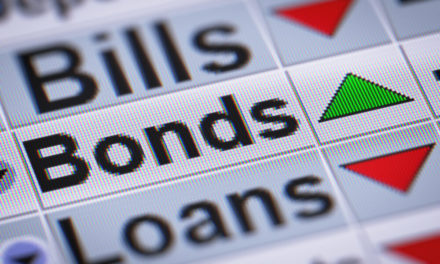Fred Hickey, editor of the “The High-Tech Strategist,” sat down for a recent question-and-answer session comparing today’s state of the stock market with the peak of the dotcom bubble in 2000, spotting bright opportunities in gold when the record bull market finally comes crashing down.
According to the article, few investors have a deeper understanding of the tech sector than Hickey, and he sees today’s situation much like the fall of 2000.
The internet bubble had broken in March when the Nasdaq peaked at 5132 and all those crazy valued dotcom stocks had crashed. In the three weeks after the Nasdaq had peaked it looked like the whole stock market had broken. But it hadn’t because investors rotated into what they perceived to be safer big cap tech names. So, they piled into stocks like Intel, Cisco, Microsoft, Nortel, EMC and Sun Microsystems. And that’s what we’re seeing today in a similar way with stocks like Amazon, Apple and, again, Microsoft.
Hickey noted the rise and ultimate fall of Intel, which rose 20 percent in one month, pushing to $76 a share before crashing 45 percent.
Think about it: At that time, Intel was the second largest company in the world. It’s the equivalent of Amazon today which means that Amazon’s market cap would go from around $1 trillion to $550 billion in just one month. That’s a shocking thing. But the difference is that Intel’s P/E ratio was 55 back then. Amazon’s is 155 today.
He then noted the amount of debt piling on with the current Federal Reserve benchmark interest rate just above 2 percent, which is leading investors to think the “coast is clear.”
But here’s the problem: By dropping rates to zero percent or even lower central banks have encouraged the whole world to take on an enormous amount of debt. Global world debt amounts to $245 trillion and it’s up 40% since the credit crisis. They have tried to correct a debt crisis with much more debt. Just consider the US, for instance: We have more than doubled our debt up to $21.2 trillion and we added $1.4 trillion of debt in the last twelve months. So even though interest rates for US treasuries are historically still very low at this point, we are heading into severe troubles. Even with rates staying where they are today the interest expense for the US government is going to be skyrocketing in the next years just like the price of bitcoin before it broke at the end of 2017.
The debt, Hickey argues, is bad for stocks because there are about 20 countries around the world whose currencies have fallen by double digits against the dollar. And along with the U.S. government, consumers and corporations have borrowed a record amount of debt.
This means that higher interest expenses will more than offsets or at least equalize the positive effects from Trump’s tax cuts – and these tax cuts are going to increase the deficit even more.
Hickey notes the situation in emerging markets is getting worse, and the Fed’s raising of interest rates is simply “adding straws to the camel’s back.”
The Fed knows that this is an extremely difficult situation even though they never admit it. Almost every time we had interest rate hike campaigns by the Fed it led to a recession and a bear market. I don’t know if history will repeat exactly. But I know it does rhyme and we’re kind of in the same situation today as we were in the fall of 2000.
Hickey says the most vulnerable stocks are in companies like Facebook, Netflix and Apple. Apple, he says, is in a strange position because it continues to lose market shares. While it has positioned itself as a premium brand with popular services, that won’t mean much because it becomes increasingly difficult to sell as many services when you aren’t selling as many phones.
And right now, the Chinese makers have really good products at one third less of the price. This is what happened in the PC market, this is how people lose market share. So how the heck can you be valuing Apple at $1.1 trillion? They’re losing market share and they’re trying to raise prices in a saturated mature market. Nevertheless, the share price keeps rising which makes the stock highly vulnerable.
So how does Hickey’s portfolio currently stand?
Since this is a bubble I’m doing exactly what I was doing in 2000: I’m not long any tech stocks because I’m expecting a crash. When I’m bullish I like to be in stocks which generate lots of cash flow, have high margins and these are oftentimes software companies. But when I’m bearish, I want to be short – through put-options – stocks where the cash just flies out the door and where the cycles are so extreme that we get the biggest booms to busts.
Regarding how bad the next crash will be, Hickey says the Federal Reserve can’t save us by just printing more money.
With interest rates still at these low levels, they are not going to be able to lower rates much more. In fact, when they tried to lower rates in 2007/08 it didn’t have any impact. The markets kept plunging so they had to launch quantitative easing. So, this time it’s going to be another round of quantitative easing which will hopefully indicate to the people that the central banks are never going to be able to get us out of this. Money printing never works. If it worked, everybody would have been doing it for 5000 years. A lot of governments have tried it and every time it has failed. All you get is malinvestments, overcapacities, asset bubbles and all these evil things.
Hickey notes gold has been down since 2011 due to growing production and shrinking demand from financial investors — but the demand will return.
But when the stock market declines, as I expect, they are going to do what they usually do: They are going back into gold and demand will increase at the same time as supply is decreasing.
Editor’s note: To read the Q&A in full, click here. How bullish are you on gold? Let us know in the comments below.




